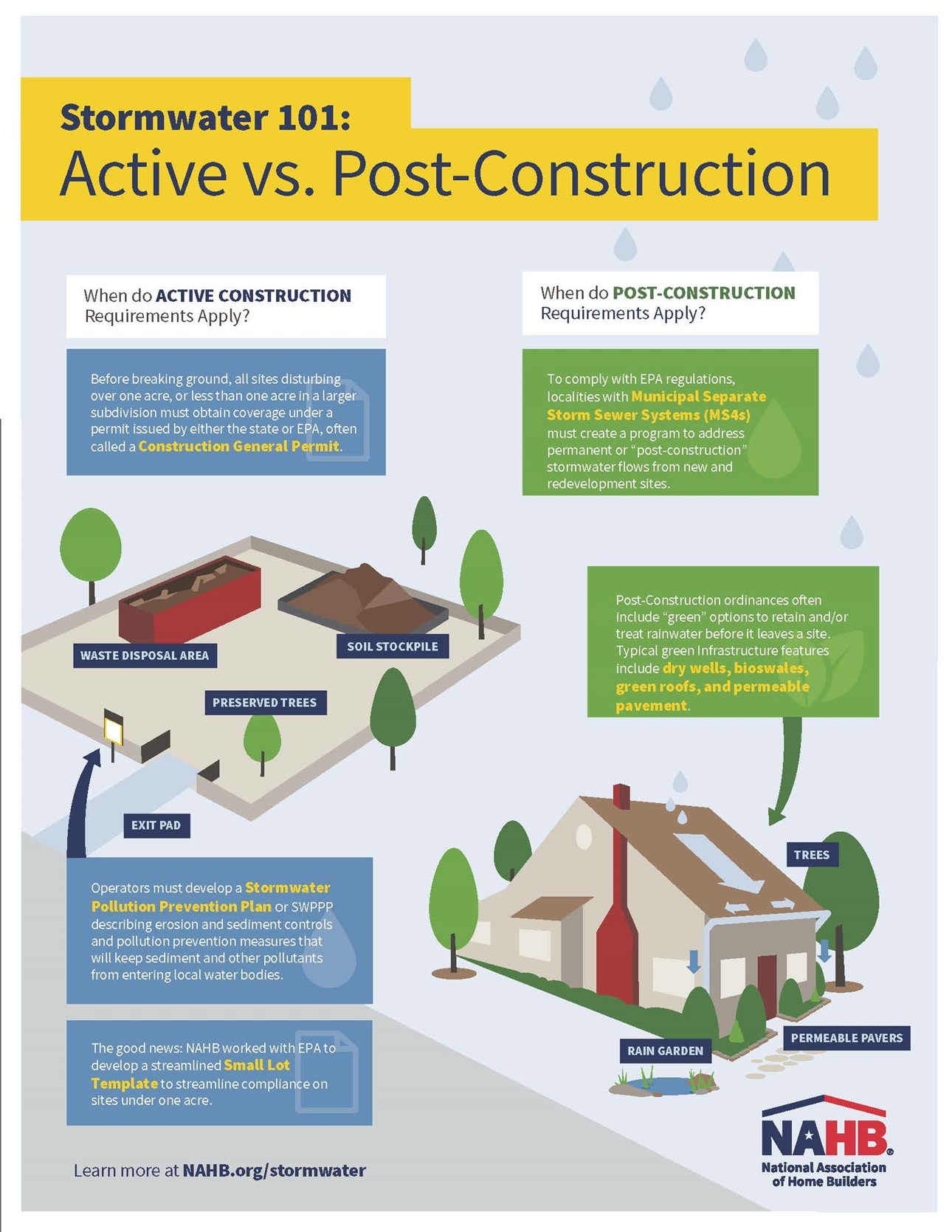Stormwater 101 Tutorial
Stormwater regulations are changing quickly. Builders and developers must understand both the minimum requirements established by federal rules as well as the different approaches used by states to implement them.
Why It Matters
Stormwater runoff that comes from developed and urbanized areas can impact public health and safety in two ways. First, an increase in suspended solids, nutrients, metals and pathogens can threaten the health of aquatic organisms, wildlife and humans. Second, an increase in the quantity of runoff can alter or destroy aquatic habitat, change natural hydrologic patterns, and lead to local or downstream flooding.
How do Stormwater Regulations Affect Builders?
If stormwater regulations are not designed and implemented in a thoughtful way, they can decrease the number of available pollutant-reduction options, increase costs, delay projects, result in poorly designed or maintained features, or simply occupy valuable space that could be used for housing or other community amenities. On the other hand, approaches such as green infrastructure, if implemented well, can seamlessly integrate into existing requirements, build value and achieve multiple community and environmental benefits.
Minimum Requirements: Active Construction vs. Post-Construction
Federal regulations actually affect builders twice – during active construction, and in perpetuity after the construction project is complete (post-construction).
Stormwater 101 Infographic




